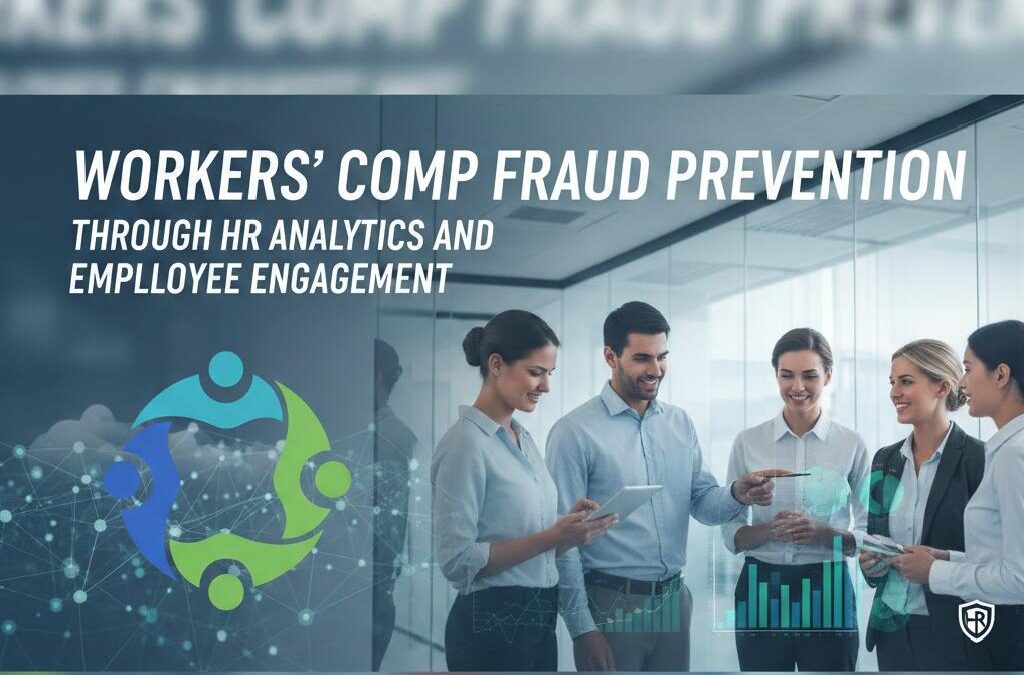Workers’ Comp Fraud Prevention Through HR Analytics and Employee Engagement
Introduction
Workers’ compensation exists to protect employees when they are injured at work. Most claims are honest, and most employees want to recover and return as soon as they can. But every system that handles money and trust also attracts abuse.
Fraud in workers’ compensation can take many forms. Sometimes it is deliberate, like exaggerating an injury. Other times it is the result of poor communication or weak documentation. Whatever the cause, the impact is serious. Fraud drives up premiums, damages morale, and undermines the integrity of safety programs.
Preventing it requires more than suspicion or surveillance. It takes good data, fair leadership, and an engaged workforce that values honesty. This is where Human Resources and PEO partnerships can make a real difference.
1. Understanding the Many Faces of Fraud
Workers’ comp fraud is not always obvious. It does not always involve dramatic lies or staged accidents. More often, it appears in smaller ways that build up over time.
Examples include:
- An employee who stays out longer than medically necessary.
- A supervisor who fails to report an incident correctly.
- A provider who bills for unnecessary treatments.
- An employer who hides injuries to avoid a claim.
Each of these actions bends the truth in a different direction, and all of them cost money. Fraud also erodes trust between management and staff. When employees believe the system is unfair, they are less likely to report real hazards or follow safety rules.
Understanding how fraud begins is the first step in stopping it.
2. The Role of HR Analytics
Data is one of the strongest tools available to detect and prevent fraud. HR analytics helps employers see patterns that would otherwise go unnoticed.
For example, analytics can highlight departments with unusually high claim rates, repeated types of injuries, or longer-than-average recovery times. It can also show inconsistencies between reported incidents and work schedules.
When analyzed carefully, this data points to where problems are developing. The goal is not to accuse but to investigate with fairness and precision. Most irregular patterns have an explanation, but when they do not, HR can take timely action.
PEOs play an important part here. They manage claims across many clients and can spot outliers quickly. Their data systems track details across industries and job types, allowing them to share insights and benchmarks that individual businesses might not see.
3. Building a Culture That Discourages Fraud
Technology can find clues, but people prevent fraud. When employees feel respected and valued, they are less likely to exploit the system. When they feel ignored or mistrusted, small frustrations can grow into dishonesty.
A strong culture of engagement is one of the best fraud prevention strategies. It begins with open communication. Employees should understand how workers’ compensation works, what their rights are, and what responsibilities they share. Transparency builds trust.
Supervisors also need training. They should know how to document injuries clearly, follow medical updates, and stay in contact with employees during recovery. Regular check-ins show care and accountability at the same time.
Engagement does not mean suspicion—it means connection. When people know they are supported, they are less tempted to take advantage of the system.
4. Early Intervention and Return-to-Work Programs
One of the clearest indicators of potential fraud is when an injured worker loses touch with their employer. The longer the separation, the harder it becomes to verify progress or plan a return.
That is why early contact matters. HR and PEO claims teams should reach out immediately after an incident. They can confirm details, coordinate care, and set realistic expectations for recovery.
A strong return-to-work program also helps. When employees can come back on light duty or modified tasks, it reduces the financial strain on both sides. It also shows genuine care, which keeps morale high and discourages false claims.
Consistency is key. Every claim should follow the same structured process. Clear communication, regular updates, and accurate records protect everyone involved.
5. The Value of Collaboration
Preventing fraud is not just an HR or management task. It is a shared effort between the employer, the employee, the insurer, and the PEO. Each has a role to play.
- Employers must create open channels for reporting and education.
- Employees must understand their responsibilities and feel safe to speak up.
- Insurers must provide fair and timely claim reviews.
- PEOs must track data, identify trends, and maintain transparency.
When these groups work together, fraud has little room to grow. Information flows faster, errors are corrected sooner, and trust replaces suspicion.
Conclusion
Workers’ compensation fraud hurts more than finances—it damages relationships and weakens the culture of safety that every organization depends on. Preventing it takes awareness, data, and leadership rooted in fairness.
HR analytics gives companies the visibility to spot warning signs. Employee engagement gives them the human strength to respond with integrity. Together, they create a system that protects both people and performance.
Fraud prevention is not about catching people doing wrong. It is about building a workplace were doing right is the natural choice.
References
- NAPEO. Preventing Workers’ Compensation Fraud Through Data and Leadership. 2024. napeo.org
- Questco. The Human Side of Fraud Prevention in Workers’ Compensation. 2025. questco.com
- PEO Insider. Using HR Analytics to Strengthen Workers’ Compensation Integrity. 2025. peoinsider.org
- NetPEO Blog. The Connection Between Employee Engagement and Workers’ Comp Honesty. 2025. netpeo.com

